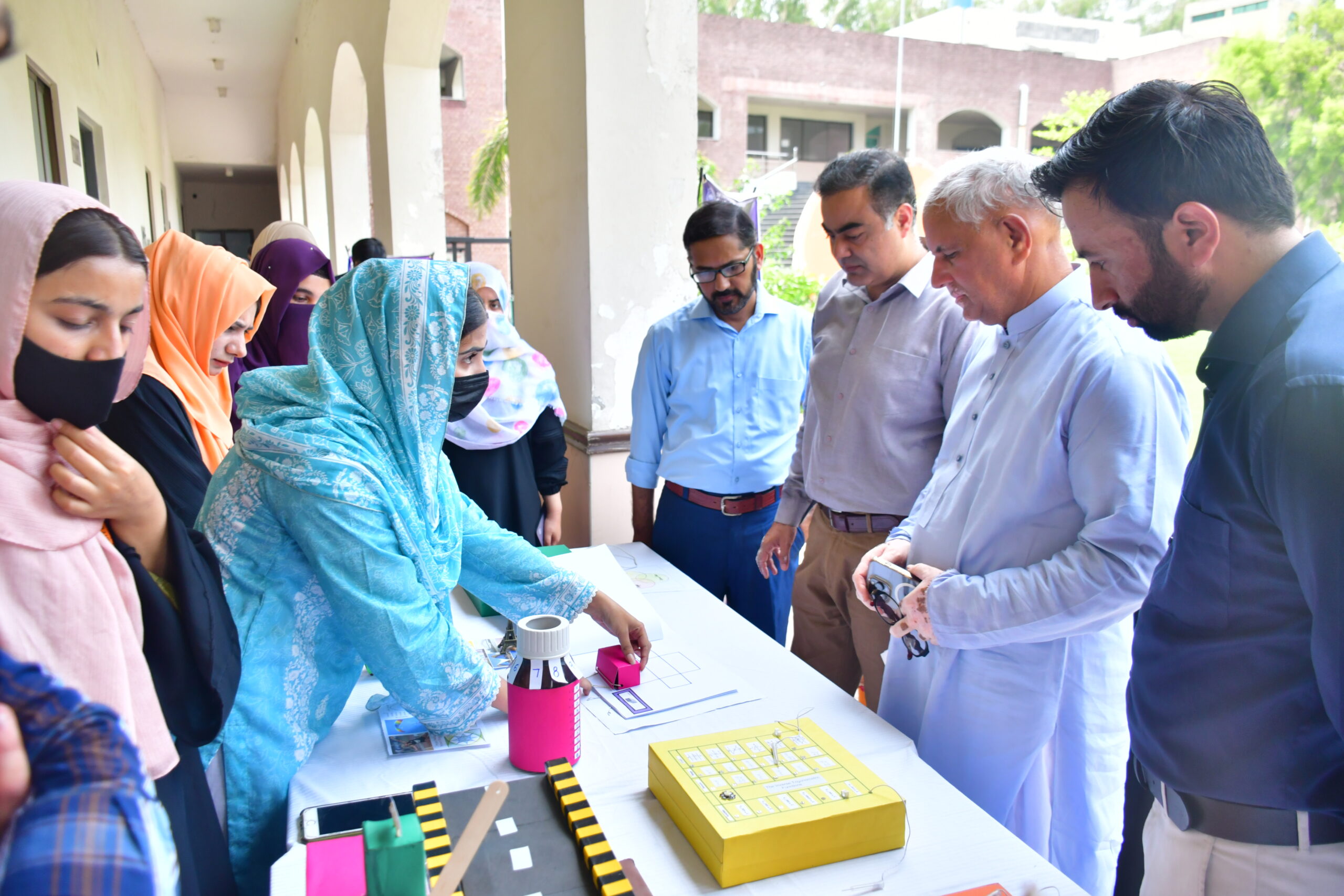Bringing Numbers to Life Through Innovation and Imagination
Math You Can Touch emerged as a unique celebration of the International Day of Mathematics at The University of Chenab. Organized by the Department of Physical Sciences (Mathematics), the event broke away from traditional approaches. Students of MPhil Mathematics transformed abstract theories into tangible, visual, and interactive exhibits. Held in the university’s central corridor, the exhibition blended creativity, innovation, and academic rigor in a remarkable display of applied mathematics.
Dr. Ayesha Shabbir (Department of Physical Sciences), Dr. Adeel (Department of Business), and Dr. Zulfiqar (Department of CET) graced the event. Their presence added inspiration and academic strength to the initiative. The distinguished guests commended the students for presenting complex mathematical concepts in an accessible, engaging, and interactive manner.
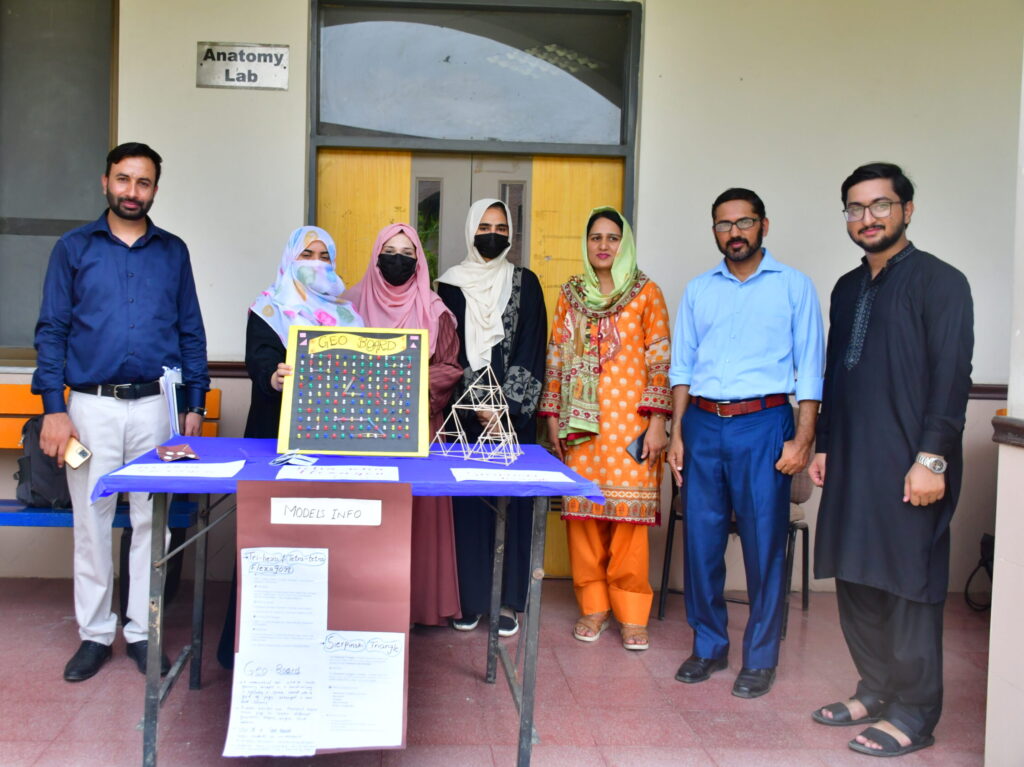
The Spirit of the Celebration
The International Day of Mathematics serves as a global reminder of the relevance and beauty of mathematics in our everyday lives. At UChenab, Math You Can Touch aligned perfectly with this spirit. The event aimed to move beyond equations on whiteboards. Instead, it focused on engaging students and visitors through hands-on experiences. Students displayed vibrant, tactile models that translated theoretical problems into real-world solutions. Visitors engaged in simulations, models, and thought-provoking visual puzzles, making this celebration both intellectually stimulating and highly immersive.
Key Objectives of the Event

- To promote experiential learning through hands-on mathematical models.
- To celebrate mathematical thinking as a core part of scientific and industrial progress.
- To encourage MPhil Mathematics students to bridge theory and practice.
- To create awareness about the universal role of mathematics in problem-solving.
- To enhance interdisciplinary connections through mathematics-led demonstrations.
Transforming Theory into Experience
At the heart of Math You Can Touch was its commitment to turning invisible principles into visible impact. The student exhibits explored everything from geometry and algebra to statistics and calculus. By using string models, 3D shapes, origami, and motion displays, participants gave form to otherwise abstract ideas.

Each booth represented a different area of mathematical exploration. Some students demonstrated how mathematical modeling works in predicting natural disasters. Others presented geometric principles using artistic representations that blended symmetry, design, and accuracy. The entire corridor echoed with excitement and curiosity as both students and faculty engaged in interactive dialogue.
Faculty Endorsement and Expert Interaction
Dr. Ayesha Shabbir expressed admiration for the depth of student understanding. She encouraged all participants to continue exploring mathematics beyond textbooks and to connect it with evolving global challenges. Dr. Adeel commended the application of mathematics in business modeling, while Dr. Zulfiqar stressed how computational mathematics supports engineering innovation.

Their combined feedback motivated students to further refine their research direction and align their academic work with societal needs.
Celebrating Interdisciplinary Application
What made Math You Can Touch stand out was its cross-disciplinary relevance. Exhibits integrated business analytics, coding algorithms, and structural design, showcasing the reach of mathematics across academic departments. These synergies illustrated how mathematical logic supports innovation in finance, medicine, architecture, and artificial intelligence. Moreover, students gained recognition for adopting real-world problems as case studies. Their mathematical frameworks addressed issues like urban traffic flow, disease modeling, and resource optimization. Through such focused efforts, the event highlighted how mathematics contributes meaningfully to sustainable development.
Fostering a Culture of Applied Learning
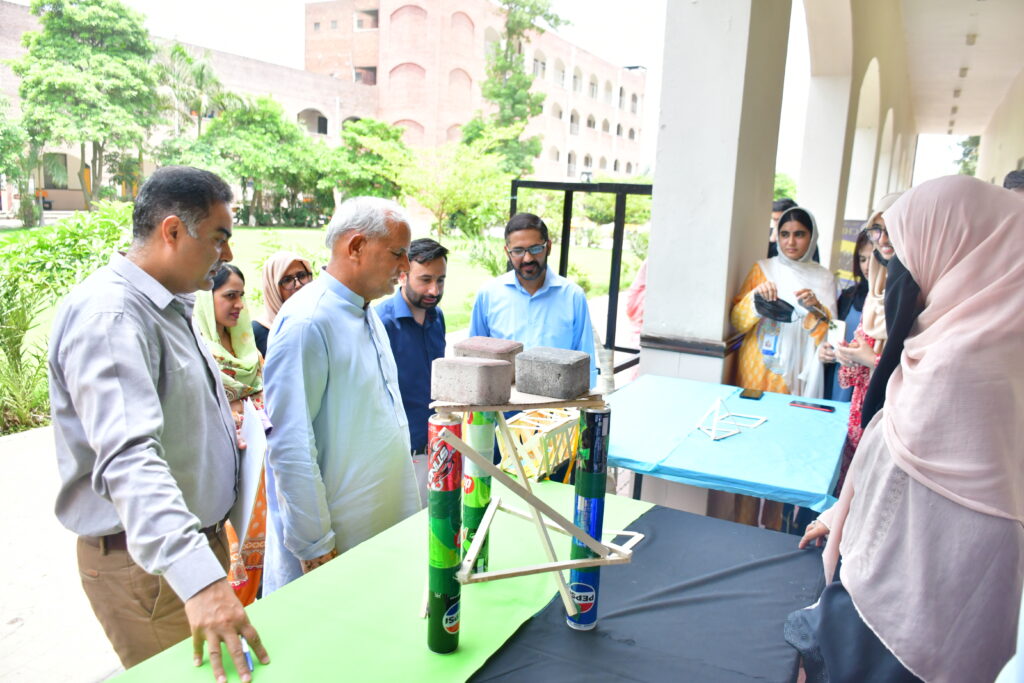
The Department of Physical Sciences has consistently encouraged practical applications in advanced mathematical education. Math You Can Touch reflected this pedagogical approach. Students were not only evaluated for their accuracy but also for creativity, clarity, and presentation skills.
Faculty members noted the increased confidence and communication excellence among participants. The event successfully built a bridge between theoretical mastery and presentation effectiveness—both vital skills for future researchers, analysts, and educators.
Students as Innovators
The student response was overwhelmingly enthusiastic. They designed, constructed, and curated their models independently, which enhanced their problem-solving and project management abilities. Collaboration, time management, and real-world thinking were evident across every presentation.
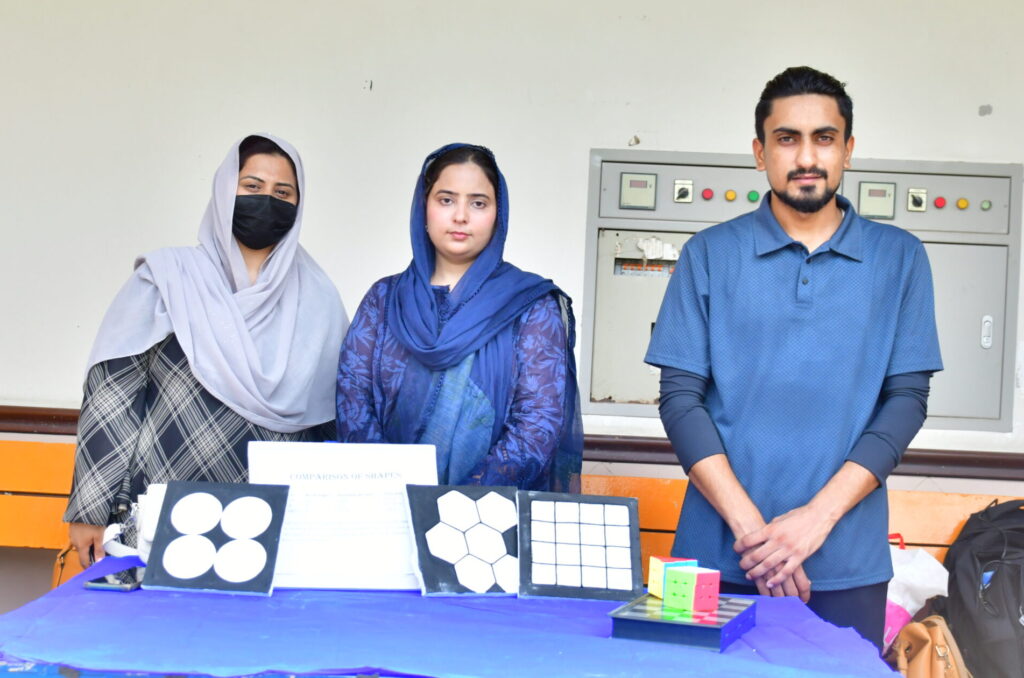
Many of the students reflected on how the event helped them view mathematics through a new lens—one that is dynamic, evolving, and rooted in application. Their efforts turned abstract structures into visible realities.
Visualizing Mathematics: A New Learning Paradigm

By offering attendees a physical way to interact with mathematical problems, Math You Can Touch pioneered a fresh learning environment. Teachers and students alike experienced how visual aids improve retention and understanding. This new dimension of learning encouraged all departments to consider mathematics as an integrative tool rather than a standalone subject.
UChenab’s Vision for Mathematical Excellence
The University of Chenab continues to lead in promoting innovation, interdisciplinary learning, and academic excellence. Math You Can Touch reaffirmed this vision by turning mathematical knowledge into an empowering experience. The Department of Physical Sciences remains committed to producing research-oriented, conceptually strong graduates who can apply mathematics across varied domains.

Why UChenab’s Approach Stands Out
- Experiential Learning Model: Students apply classroom knowledge to physical models and community projects.
- Focus on Communication: Emphasis on presentation skills and peer dialogue strengthens academic delivery.
- Collaborative Environment: Students, faculty, and other departments work together to develop integrated knowledge systems.
- Creativity-Driven Curriculum: Encourages thinking beyond formulas to solve real-life issues.
Shaping the Future of Mathematical Thinking

Looking ahead, The University of Chenab plans to continue such innovative celebrations that link academic content with real-world relevance. The success of Math You Can Touch opened new pathways for interactive learning, interdisciplinary collaboration, and student-led innovation. As the world leans more on data, logic, and algorithmic thinking, UChenab ensures its students are not just consumers of knowledge but creators of meaningful impact.

